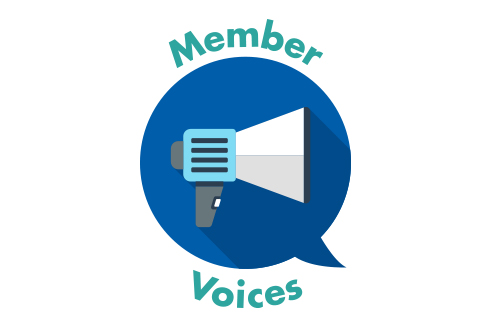Randy P. Wall, P.E., M.ASCE, is a vice president for the Western Branch of ASCE’s Montana Section. He is the president of the Engineering Leadership Institute, consulting with firms to create success-focused cultures, improve operations, and increase profits. In today’s Member Voices column, Wall outlines a path toward profitability that might surprise some: a hyper-economic, results-based business focus might, ultimately, be bad for business.
You know the mantra.
Higher profitability is the result of reducing expenses and increasing efficiency.
Let’s break down this hyper-economic and results-based focus and look at how little it involves the organization’s most important asset: its people.
 • Overhead rate, the ratio of a firm’s total overhead expenses divided by total direct labor costs, is a standard measure of a firm’s profitability. So, because professional development or training costs are typically viewed as overhead, a company can increase profits by reducing the amount spent on training, right?
• Overhead rate, the ratio of a firm’s total overhead expenses divided by total direct labor costs, is a standard measure of a firm’s profitability. So, because professional development or training costs are typically viewed as overhead, a company can increase profits by reducing the amount spent on training, right?
• The definition of efficiency is outputs divided by inputs, period. Most engineering firms not only use “chargeability” or “utilization” (billable hours divided by total hours) as a major key performance indicator for profitability, but it’s also used as a major metric for employee reviews. Engineers understand math, and they also understand when upper management distills their overall performance into a single “efficiency” number. It’s not very engaging, to say the least.
So, if an organization reduces the amount it spends on training and development, then more billable time will be racked up by employees. Reduce expenses and increase efficiency, what could be better, right?

Well, it turns out, quite a lot.
Many engineering companies use a hyper-economic and results-based focus for their business model, only to wonder why, no matter how much they reduce overhead and scream about efficiency, they constantly struggle with low to average profitability.
Why?
Bottom line, a hyper-economic and results-based focus sucks all the oxygen out of the conversation and doesn’t leave any room for employees to express what they really want out of their job.
Our experience and studies have shown the biggest challenges faced by engineering firms today are the recruitment and retention of talent.
One of the best ways for engineering firms to increase their operating profits is to break the fixed mindset of hyper-economic and results-based focus and adopt a growth mindset that emphasizes the development of the people within their organization.
By conducting an ongoing inquiry with your employees about where they want to take their career, and then consistently providing them with ample training opportunities to achieve their goals, your employees will experience the following benefits.
• They will feel appreciated by the organization’s ongoing interest and investment in their professional development.
• When individuals are continually growing and learning along with everyone else, their feedback, contributions, and work are given the same focus, and they feel included in something bigger than themselves.
• An ongoing training and professional development program – that continues in good times and bad – demonstrates a consistent commitment to an individual’s wellbeing.
• Providing professional development and training on an individual’s career path helps them create their success and manifest their own destiny, resulting in higher engagement and commitment to the organization.
 By adopting a growth mindset and focusing on your people by investing in professional development and training, your organization will become a place where people want to work and stay. By shifting to a people focus, your organization will realize the following improvements.
By adopting a growth mindset and focusing on your people by investing in professional development and training, your organization will become a place where people want to work and stay. By shifting to a people focus, your organization will realize the following improvements.
• Higher morale, better work-life balance for your employees, and higher productivity.
• Significantly higher workforce engagement and commitment that lowers turnover, boosts retention, and dramatically lowers the high overhead costs due to employee departures.
• Ongoing training and professional development will increase the capacity of your workforce and provide the skills for better work planning, resulting in higher utilization, efficiency, and profitability.
When I was an engineering manager, each of my team members was expected to seek out the training they desired, provide a proposal, and then I would get it approved.
Successful completion of the training in addition to providing a brief write-up of how the training benefitted their practice was a key behavioral indicator, alongside the KPI’s, used in their performance reviews. This improved moral helped shape the future direction of their careers, improved engagement, reduced turnover, and was one of the reasons why my teams were consistently the highest producers and the most profitable.
Conversely, another engineering organization I worked for watched its stock price plummet because the ratio of profitability to labor costs was too high. In other words, their overhead was too high, and efficiency was too low.
You guessed it, the first thing to get axed was the company’s overall training budget. Sufficed to say, this company continually struggled with high turnover and low profitability.
In conclusion, engineers are great with numbers and scientific approaches to solving problems. However, boiling your employees down to a number and running your business with a results-based scientific approach will not improve your profitability.
It may not seem intuitive for engineers to adopt a humanistic and non-scientific approach, that focuses upon the professional development of your workforce, to improve profitability – but it works.
So, if you want to significantly improve the profitability of your engineering firm, focus on your people!

